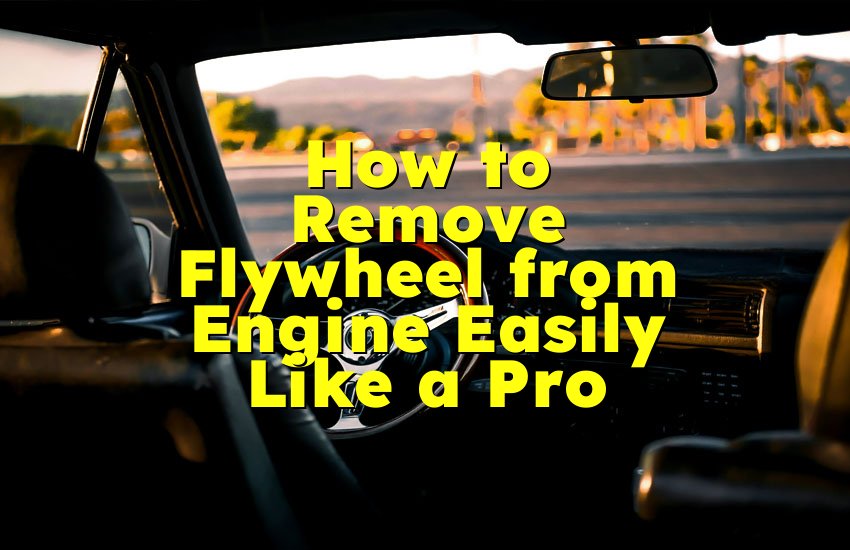As an Amazon Associate, I earn from qualifying purchases at no extra cost to you.
How Much Antifreeze Does Your Car Really Hold? Expert Advice
You know that feeling when your car starts acting strange, and you pop the hood, hoping it’s something simple? One of the most common problems people face is not having enough antifreeze in the system. You might wonder, How many gallons of antifreeze does my car actually need? The simple answer is most cars hold about 2 to 3 gallons of antifreeze, but this can change depending on your vehicle’s make, model, and engine size. In this post, we'll walk you through everything you need to know in a very easy and clear way. No confusing car talk, just real help.
Understanding What Antifreeze Really Does
Antifreeze might seem like just another liquid in your car, but it does something really important. It helps keep your engine at the right temperature. If the engine gets too hot or too cold, it can stop working or get badly damaged. Antifreeze keeps that from happening by mixing with water in your radiator to form what’s called coolant. This coolant flows through your engine and pulls heat away from it when it’s hot, and keeps it from freezing when it’s cold.
When you drive, the engine makes a lot of heat. That heat needs to go somewhere. The coolant takes it into the radiator, where it gets cooled off and then goes back into the engine. This cycle repeats over and over while you drive. Without antifreeze, the water alone would either boil away or freeze, depending on the weather.
You may not think about it much, but using the right amount of antifreeze is just as important as getting oil changes. If you don’t have enough, the system can’t cool your engine the right way. If you have too much, it can also cause problems. Most cars need about 2 to 3 gallons of coolant total, and since it’s a 50/50 mix of antifreeze and water, that means you'll use 1 to 1.5 gallons of antifreeze and the same amount of water.
Some newer vehicles might use special types of antifreeze or different amounts based on how the engine is built. It’s always good to check your owner’s manual or ask a mechanic, but you can usually find this info quickly if you know where to look.
- Antifreeze keeps your engine from overheating or freezing
- It mixes with water to make coolant
- Coolant flows through the engine and radiator
- Most cars need 2 to 3 gallons total
- You usually need 1 to 1.5 gallons of antifreeze and the same amount of water
How to Know Exactly How Much Antifreeze Your Car Needs
Figuring out exactly how much antifreeze your car holds might sound tricky, but it’s not too hard when you know where to look and what to consider. Every car is a little different, and the total coolant system capacity depends on things like engine size, radiator size, and even whether your car has a turbocharger or not.
The first place to check is your car’s owner's manual. That small book in your glove box (or found online) has all the important details, including how much coolant your car needs. Look under sections like “Cooling System Capacity” or “Specifications.” It usually tells you the total volume in quarts or liters, which you can easily convert to gallons. There are 4 quarts in a gallon and about 3.8 liters in a gallon.
Let's say your owner’s manual says the system holds 10 quarts of coolant. That means it takes 2.5 gallons in total. Because coolant is a 50/50 mix of antifreeze and water, you'll use about 1.25 gallons of antifreeze and 1.25 gallons of water. Always use distilled water, not tap water, so you don't damage your system with minerals or build-up.
If you don't have your manual or can't find the information, you can also ask a mechanic, call your car dealership, or search online by typing your car's make, model, and year followed by "coolant capacity."
Some cars also have a coolant reservoir tank with markings for “min” and “max.” This gives you an idea of how much coolant is in the system at a glance. But this tank only holds part of the total coolant. Most of the antifreeze is inside the radiator and engine, so don't just fill the reservoir and think you're done.
Another way to know is by draining and refilling the system. This is usually done during a coolant flush, and when you pour new coolant in, you'll see how much the system really takes. Just be careful and only do this when the engine is completely cool, or you could get burned.
- Check your owner's manual for the exact amount
- Most cars need between 2 to 3 gallons total
- Coolant is 50% antifreeze and 50% water
- Use distilled water, not tap water
- You can ask a mechanic or check online
- The reservoir tank shows coolant level but not full capacity
- A full coolant flush shows how much the car really holds
Why Different Cars Need Different Amounts
Not all cars are the same, and that means they need different amounts of antifreeze. A small car with a small engine will usually need less coolant than a big truck with a V8 engine. That's because bigger engines make more heat, so they need more coolant to control the temperature.
Small compact cars, like a Honda Civic or Toyota Corolla, usually need around 1.5 to 2 gallons of coolant total. That means you'll use around 0.75 to 1 gallon of antifreeze and the same amount of water.
Midsize cars and SUVs, like a Ford Escape or Nissan Altima, might need 2 to 2.5 gallons. So you’re looking at about 1 to 1.25 gallons of antifreeze and the rest water.
Large trucks and performance cars, like a Dodge Ram or Ford Mustang, can take 3 gallons or more, depending on the engine and if there’s a turbocharger or special cooling system.
Some vehicles even have two cooling systems. Hybrid and electric cars, for example, sometimes use one system for the electric motor and another for the engine or battery pack. That means they might need even more coolant.
Diesel engines also tend to use more antifreeze, since they run hotter and work under more pressure. Always make sure you’re using the right type of antifreeze too. Some cars need special formulas like HOAT, OAT, or Dex-Cool. Using the wrong kind can cause rust or damage.
Every vehicle is built to work with a certain volume of coolant. Using too little can make the engine overheat. Using too much can overflow the system. Follow the factory recommendations and don't guess.
- Small cars use 1.5 to 2 gallons
- Midsize cars use 2 to 2.5 gallons
- Trucks and sports cars may use 3 gallons or more
- Hybrids and EVs may have 2 cooling systems
- Diesel engines need more coolant
- Always use the right type of antifreeze
How to Check and Add Antifreeze the Right Way
Checking and adding antifreeze doesn't have to be hard. You don't need to be a car expert to do this. Just follow a few easy steps, and you'll be good to go. But first, always make sure your engine is cool. Opening the coolant cap while the engine is hot can cause hot steam or liquid to shoot out and burn you.
Start by opening the hood and looking for the coolant reservoir. It's usually a white or clear plastic tank with a cap labeled "coolant" or "antifreeze." There will be lines on the side that say "min" and "max." If the coolant is below the "min" line, you need to add more.
Before you pour in anything, check what type of antifreeze your car needs. This info can be found in your manual or on the cap. Some cars take green coolant, some take orange, and others might use pink or blue. Never mix different types unless they say they're safe to mix.
Now pour the correct antifreeze mixture into the reservoir. If you're using a concentrated antifreeze, mix it 50/50 with distilled water before adding it. If it's pre-mixed, you can pour it in as-is. Stop when the coolant reaches the "max" line.
Also check the radiator if you're doing a full refill. Remove the radiator cap only when the engine is cool. Fill it up slowly to avoid air pockets. After filling, run the engine with the heater on high to help the new coolant move through the system. Then turn it off, let it cool, and check levels again.
If you see the coolant level dropping again soon after, you might have a leak. Look for drips under your car, or take it to a shop to get checked.
- Never open the coolant cap on a hot engine
- Find the reservoir and check the fluid level
- Use the right antifreeze type for your car
- Mix 50/50 with distilled water unless it's pre-mixed
- Fill to the "max" line
- Run the engine with the heater on after filling
- Watch for leaks if the level keeps dropping
What Happens If You Use Too Much or Too Little
Adding too much or too little antifreeze can hurt your car's engine. People often think more is better, but that's not true when it comes to coolant. Your car's cooling system is built to work with a certain amount of fluid, and going over or under can mess things up.
If you use too little antifreeze, your car might overheat in summer or freeze in winter. Without enough coolant, the engine can't get rid of heat fast enough. This can cause it to overheat, warp the cylinder head, or even crack the engine block.
If you use too much antifreeze, it can overflow and come out of the cap or reservoir. It might also cause extra pressure in the system, leading to blown hoses or a broken radiator. Antifreeze doesn't work better when there's more than needed. In fact, too much antifreeze can even reduce cooling performance.
Coolant expands when it gets hot. That's why there's a reservoir—to catch the extra fluid when it heats up. But if the system is overfilled, there's no space left for expansion, and things can get messy or even dangerous.
To avoid this, always follow the manual or ask a trusted mechanic. Fill only to the correct level and double-check after driving a short distance. Let the car cool and see if levels stayed the same. If they dropped too much, you might have trapped air or a leak.
- Too little antifreeze can cause overheating or freezing
- Too much can cause overflow or damage
- The system is designed for a specific volume
- Coolant expands when hot, needs room in reservoir
- Always fill to the proper level only
- Check levels after driving and cooling down
Signs That Tell You It’s Time to Add or Replace Antifreeze
Sometimes your car gives you signs when something isn't right with the coolant. If you learn to spot these signs early, you can stop big problems before they start.
The most common sign is the temperature gauge going too high. If it's creeping into the red zone, that means your engine is running too hot. Another sign is if your heater isn't working well. That's because the heater uses hot coolant to warm the air, and if there's not enough, it can't do its job.
Look under your car for puddles of green, orange, or pink liquid. That's a sign of a leak. Also check the coolant in the reservoir. If it looks dirty, rusty, or oily, it may be time to flush and replace it.
You might also see a warning light on your dashboard that says "low coolant" or shows a thermometer symbol. Don't ignore these lights. They're telling you there's a problem.
If your car smells sweet while running or after shutting off, that could be leaking coolant. Antifreeze has a sweet smell, and while it may not seem dangerous, it means something is leaking and needs fixing.
Coolant doesn't last forever. Even if it looks fine, it breaks down over time and loses its ability to protect your engine. Most cars need fresh coolant every 2 to 5 years, depending on the type and driving conditions.
- Temperature gauge is too high
- Heater blows cold air
- Puddles or leaks under car
- Coolant looks dirty or rusty
- Warning lights on dashboard
- Sweet smell around the car
- Change coolant every 2 to 5 years
Final Thoughts
Taking care of your car’s antifreeze isn't hard, but it's super important. Most cars hold about 2 to 3 gallons of coolant, which means around 1 to 1.5 gallons of antifreeze. Make sure you're using the right kind and the right amount. Check your owner’s manual, look out for signs of low coolant, and top off carefully. A little care now can save you from huge car problems later. Keep your engine safe and running smooth by paying attention to this often-overlooked fluid.
Frequently Asked Questions (FAQs)
Is it safe to add antifreeze myself?
Yes, it's safe to add antifreeze yourself if you follow the right steps. Make sure your engine is completely cool before you open the cap, or you could get burned by steam or hot liquid. Use the correct type of antifreeze listed in your owner's manual, and never mix two types unless it clearly says it's safe to do. If you're using concentrated antifreeze, mix it 50/50 with distilled water. Pre-mixed antifreeze can be added directly. Fill to the proper line and avoid overfilling. If you're unsure or uncomfortable, ask a mechanic for help.
Can I drive with low antifreeze?
You can drive a short distance with low antifreeze, but it's risky and not a good idea. Without enough coolant, your engine can overheat very quickly. Overheating can cause serious damage, like a cracked engine block or blown head gasket, which are expensive to fix. If you see a warning light or your temperature gauge is rising, stop driving and check the coolant level. Add antifreeze if you have it, and let the engine cool before opening the cap. It's always better to fix the issue than take the risk.
Do I need to flush the system before adding new antifreeze?
You don't always need to flush the system before adding new antifreeze, but it depends on the condition of your old coolant. If the coolant is rusty, dirty, or looks oily, it's a good idea to flush it out and start fresh. Flushing helps remove built-up dirt, rust, and old fluid that doesn't work as well anymore. You should flush the system every 2 to 5 years, depending on the car and the type of antifreeze used. A clean system works better and helps protect your engine longer.
Is it okay to use just water instead of antifreeze?
No, it's not okay to use just water in your cooling system. Water alone can freeze in cold weather and boil in hot weather. It also doesn't protect against rust or corrosion. Antifreeze helps water stay liquid in extreme temperatures and adds protection for your engine. You should always use a 50/50 mix of antifreeze and distilled water unless you're using pre-mixed coolant. Using only water can damage your engine and cooling system over time, especially if you live in a place with hot summers or cold winters.
Can mixing antifreeze types hurt my engine?
Yes, mixing different types of antifreeze can hurt your engine unless they're labeled as safe to mix. Some types of antifreeze react with each other and form sludge or gel-like substances that block the flow of coolant. This can cause your engine to overheat or even break important parts inside the cooling system. Always check your owner’s manual to see what type your car needs, and don't mix unless it's clearly allowed on the label. If you've already mixed them, it's best to flush the system and refill with the correct type.
Do I have to use distilled water?
Yes, it's best to use distilled water when mixing with antifreeze. Tap water has minerals like calcium and magnesium that can build up inside your radiator and engine over time. These minerals can cause scale, rust, and blockages that reduce the cooling system's performance. Distilled water has been cleaned of all these minerals, so it's safe for your engine. If you don't have distilled water, you can buy pre-mixed coolant, which already has the water and antifreeze in the right mix and is safe to use.
Can too much antifreeze cause problems?
Yes, using too much antifreeze can cause problems. If you fill the coolant system past the "max" line, there won't be space for the coolant to expand when it gets hot. This can lead to pressure building up, leaks, and even damage to hoses or the radiator. Too much antifreeze also changes the balance of the coolant mix and may reduce how well it cools the engine. Always check your manual and fill to the proper level only. If you overfill by mistake, remove the extra with a siphon or ask a mechanic.
Is it normal for antifreeze to disappear?
It's not normal for antifreeze to disappear quickly. If your coolant level is dropping often, it usually means you have a leak. The leak could be in a hose, radiator, water pump, or even inside the engine. Sometimes the leak is small and hard to see, but if you notice wet spots, a sweet smell, or steam under the hood, something's wrong. In rare cases, the coolant might be leaking into the engine and burning off, which is more serious. Get your cooling system checked if the level keeps going down.











